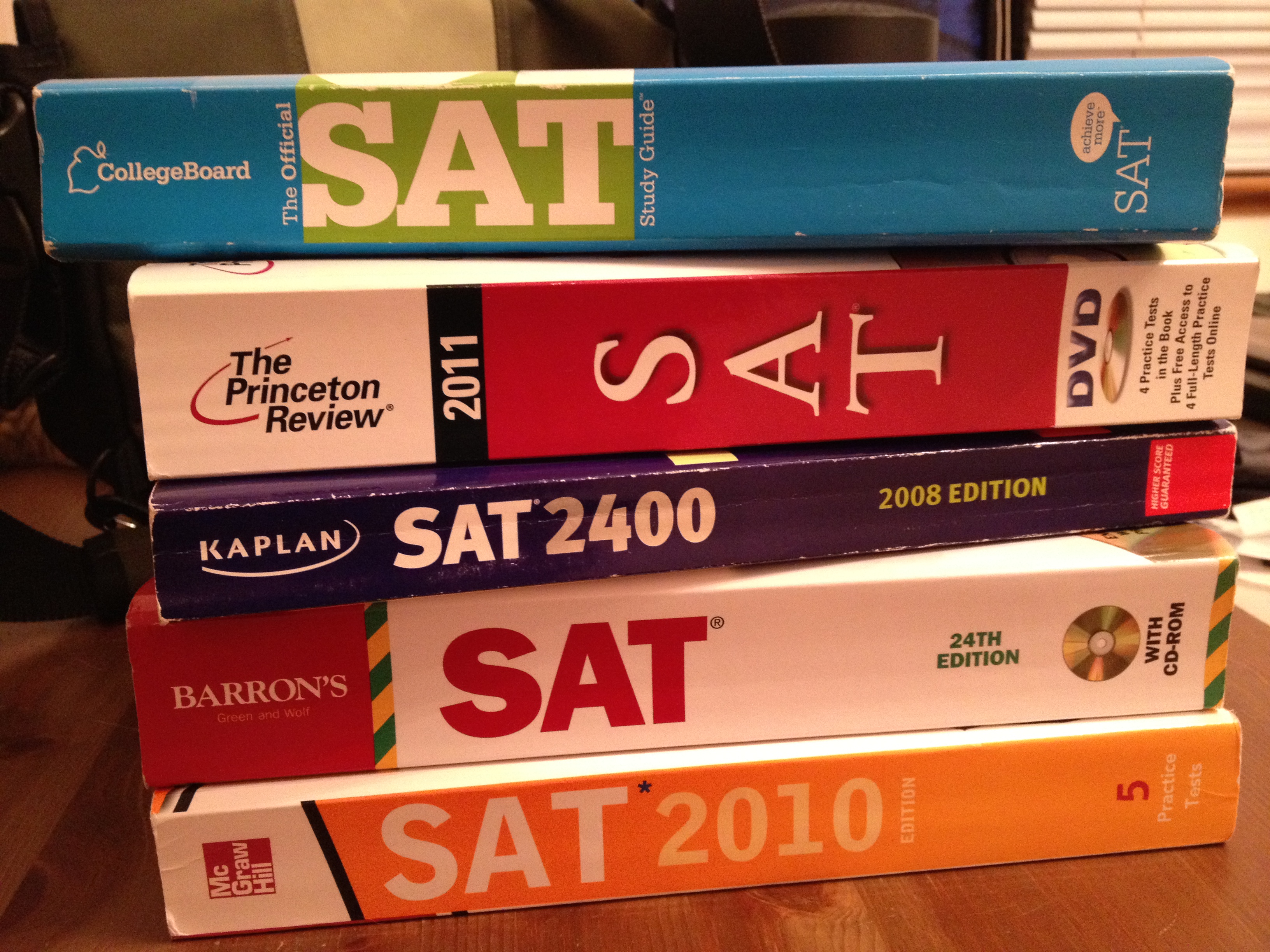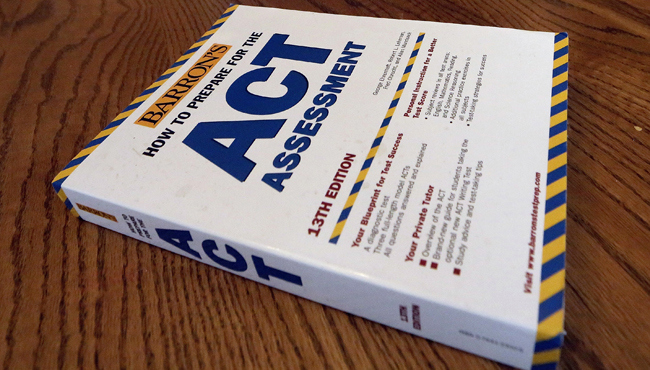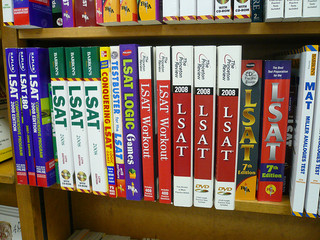SAT Tuition

About the SAT
The SAT helps college admission officers make fair and informed admission decisions. Combined with a student's academic record, it is a proven, reliable indicator of college success. Since it's launch in 1926, the SAT has helped millions of students connect with college success and today remains the most reliable, effective measure of a student's college readiness. The SAT tests the subject matter learned by students in high school and how well they apply that knowledge—the critical thinking skills necessary to succeed in college.
SAT Facts
The Redesigned SAT is offered several times a year in both the United States and at international testing sites. We've got everything you need to know to be prepared. The redesign affects the test’s format, scoring, timing, and more. An optional essay, fewer multiple-choice questions, and no penalty for wrong answers are just some of the new features. Get ready for an increased emphasis on critical thinking, problem-solving, and data analysis.
Here is a breakdown of the changes to the New SAT format:
- Takes 3 hours; 3 hours and 50 minutes with the optional essay (testing time only—does not include breaks or administrative tasks)
Consists of 10 separately timed sections:
- 1 Evidence-Based Reading and Writing test
- 65-minute Reading section
- 35-minute Language and Writing section
- 1 Math test (55-minute section with a calculator)
- 25-minute section without a calculator
- 1 Essay test (optional) - 50 minutes
- 4 answer choices for multiple-choice questions
Assesses subject matter learned in high school and problem-solving skills in three areas:
- Critical reading
- Writing and Language
- Math
Essay: Discontinued
- Essay is optional
- Students have 50 minutes to analyze a 650-750 word document and draft an essay
- Tests reading, analysis, and writing skills; requires students to analyze a source document and explain how the author builds an argument
- Facts matter
- Scored separately
Reading and Writing:
- Evidence-Based Reading
- No Sentence Completions
- Tests understanding of passages from U.S and World Literature, History/Social Studies, and Sciences (short passages)
- Writing and Language
- Tests "Expression of Ideas" and "Standard English Conventions" through passages relating to Careers, History/Social Studies, Humanities, and Science
- All questions pull from extended prose (400-450 words)
Math:
Concentrated focus on:
- Problem-solving and data analysis
- "The Heart of Algebra"
- "Passport to Advanced Math"
- Real-world problem solving accompanied by informational graphics
- Calculator permitted for 37 questions; not permitted for 20 questions
- Multiple choice and grid-in questions; 1 Item Set grid-in question
Scoring:
- No wrong-answer penalty
- Score is out of 1600
- 800 for Math
- 800 for Evidence-Based Reading and Writing
- Subscores and insight scores available
- Optional Essay will be scored separately
- Students are reminded that the test is machine-scored, except for the essay
Why should students take the SAT?
Students and parents often ask why it is important to take the SAT. Reasons include:
- All colleges accept the SAT as an objective measurement of students' college readiness
- Used with GPAs and high school transcripts, SAT scores allow colleges to fairly compare applicants
- Taking the SAT gives students access to scholarship opportunities
- Most colleges require an admission test like the SAT
The SAT provides students with the most comprehensive performance feedback of any admission test. Many institutions require a writing assessment for admission. Students who take the SAT automatically fulfill such requirements.
How difficult is the SAT?
The SAT is developed to reflect accepted educational standards. The data show that the material on the SAT and the time allocated to each section are appropriate for the intended test-taking population:
- On average, students answer 50 to 60 percent of questions correctly
- 80 percent finish nearly the entire test
- Almost all students complete at least 75 percent of the questions
We encourage students to become familiar with the test before they take their first SAT. GPGS assesses each student four times before they write the actual exam.
GPGS offers:
- Sample questions
- Answer explanations
- Official SAT practice/study test
- Official Syllabus Review
- Personalized score report
- Class tutorials (3 months)
SAT testing dates in Trinidad and Tobago
- August
- October
- November
- December
- March
- May
- June
SAT Subject Test Tuition (Discontinued until Reinstated by College Board)

About the Subject Test
Demonstrating subject-area mastery on SAT Subject Tests
Students take the SAT Subject Tests to demonstrate to colleges their mastery of specific subjects such as English, history, mathematics, science, and foreign languages. The content of each test is not based on anyone's approach or curriculum but rather evolves to reflect current trends in high school course work.
The SAT Program offers Subject Tests that fall into general subject areas:
- English
- History
- Languages
- Mathematics
Science
SAT Subject Tests facts
The SAT Subject Tests are offered six times a year in the United States and at international sites.
- Students can take one, two, or three tests on a single test date.
- Each takes one hour.
- The Language with Listening tests is always given in the first hour of testing. Only one listening test can be taken per test date.
- Only one Biology test can be taken per test date. After the first 60 questions, students must choose either Biology – Ecological or Biology – Molecular; they cannot take both.
- All Subject Tests consist of multiple-choice questions, but some have unique features or formats.
- The types of questions change little from year to year.
- All Subject Tests are machine scored.
- Unique features and formats on SAT Subject Tests
Students need to be prepared for some differences between the Subject Tests. The SAT Subject Tests covers these differences in depth. The unique features and formats of the tests include:
Languages with Listening: Subject Tests in Chinese, French, German, Japanese, Korean, and Spanish consist of a listening section and a reading section. Students taking these tests must bring an acceptable CD player with earphones to the test center.
Biology E/M: This test contains 60 general-knowledge multiple-choice questions, followed by 20 multiple-choice questions that emphasize one of the following:
- Ecological (Biology E) subject matter
- Molecular (Biology M) subject matter
Students choose the section they feel most prepared for at the start of testing. After completing the 60 core questions, test-takers move on to the section that they chose.
Chemistry
This test includes approximately five questions that ask students to evaluate two related statements based on equation balancing and/or predicting chemical reactions. Students answer these five questions in a special section of the answer sheet, labeled "Chemistry." Mathematics Level 1 and Level 2:
These tests include questions that cannot be answered without the use of at least a scientific or graphing calculator. Mathematics Subject Tests are developed with the expectation that most students will use a graphing calculator. Help your students decide on the right test for them, including:
- Whether to take a listening test
- Which Biology emphasis to choose
- Which Mathematics level to choose
Helping Students Prepare
Most students take the Subject Tests toward the end of their junior year or the beginning of their senior year in Sixth Form or even when they complete their Caribbean Examinations Counsel Exams (CXC). To help students prepare for the tests, including test-day procedures, please refer to our office counselors, they will be ready to help.
Students should take tests such as Biology, Chemistry, and Physics right after they complete those courses in high school, so the material is still fresh in their minds. For other subjects, such as languages, students will probably do better after at least two years of study. If a student is taking a test in a subject that wasn't studied recently, we encourage these students to review course material thoroughly and methodically over several weeks. PS. Customized tuition packages are available.
Free preparation resources
Students should become familiar with the test purpose, format, and content before test day. Getting Ready for the SAT Subject Tests is distributed to all high schools, including ours. It includes information about each test along with sample questions. Please check with our office for class, and examination schedule.
SAT Subject testing dates in Trinidad and Tobago
- October
- November
- December
- January
- May (Americas only)
- June
ACT Tuition

About the ACT
The ACT college readiness assessment is a curriculum- and standards-based educational and career planning tool that assesses students’ academic readiness for college. The ACT is the capstone of our College and Career Readiness System. The test uses the same score scale as ACT Explore/ACT Plan and ACT Aspire, making the system an effective tool to monitor academic progress and student growth. The ACT motivates students to perform to their best ability. Test scores reflect what students have learned throughout high school and provide colleges and universities with excellent information for recruiting, advising, placement, and retention. Taking the test often results in increased college enrolment, especially for underrepresented students. To support college and career planning, GPGS career exploration component helps students identify career options that can certainly be beneficial to securing your future. Quick facts about the ACT:
- The ACT is accepted by all four-year colleges and universities in the United States.
- The ACT is not an aptitude or an IQ test. Instead, the questions on the ACT are directly related to what students have learned in high school courses.
- More than 1.66 million high school students in the graduating class of 2012 in both the US and overseas took the ACT.
- The ACT is administered in all 50 of the United States and in many other countries.
Description of the ACT
The ACT (No Writing) consists of four multiple-choice tests: English, Mathematics, Reading, and Science. The ACT Plus Writing includes the four multiple-choice tests and a Writing Test.
Test Content
English 75 questions (45 minutes) Measures standard written English and rhetorical skills. Mathematics 60 questions (60 minutes) Measures mathematical skills students have typically acquired in courses taken up to the beginning of grade 12. Reading 40 questions (35 minutes) Measures reading comprehension. Science 40 questions (35 minutes) Measures the interpretation, analysis, evaluation, reasoning, and problem-solving skills required in the natural sciences. Optional Writing Test 1 Measures writing skills emphasized in high school English prompt (30 minutes) classes and in entry-level college composition courses.
ACT testing dates in Trinidad and Tobago
- September
- October
- December
- February (Americas only)
- April
- June
GRE Tuition

About the GRE revised General Test
One Test for Graduate and Business School
Getting an advanced degree can create many opportunities. Whether you are planning to go to graduate school or business school — or just exploring your options — you are taking an important step toward your future. It is a smart move to show schools your best and with the GRE revised General Test, you can! That's the Power of Confidence — only with the GRE revised General Test.
The GRE revised General Test gives you the Power of Confidence to help you do your best. With the GRE revised General Test, you decide which scores to send to schools. If you feel you didn't do your best on test day, that's okay. You can re-take the test and then send only the scores you want schools to see. It's all part of the Score Select option, only available with GRE tests. Plus, the GRE revised General Test is the only admissions test for graduate or business school that lets you skip questions within a section, go back and change answers, and have control to tackle the questions within a section you want to answer first.
The GRE revised General Test features question types that closely reflect the kind of thinking you'll do in graduate or business school.
GRE Format
The GRE exam measures three skill areas:
- Analytical Writing - (2 tasks for a total of 60 minutes)
- Verbal Reasoning - (2 sections for a total of 60 minutes)
- Quantitative Analysis - (2 sections for a total of 70 minutes)
GRE testing dates in Trinidad and Tobago:
Paper Base: - February - October - November
Computer Base: - January - December
The analytical writing section uses a free-response (or essay) format to measure your ability to write complex thoughts in clear, precise English prose. The skills you need to demonstrate in this section include:
- Evaluate claims and evidence
- Develop a complex, coherent argument/discussion
- Support ideas with reasons and example
- Write using standard punctuation and grammar
For this section of the test, you will need to write an essay or argument for each of the two tasks. For most international students, this section is moderately difficulty. Although the GRE exam requires you to demonstrate a sophisticated command of written English, the free-response format allows you to craft your answer in whatever ways highlight your strengths.
The verbal reasoning section uses a multiple-choice format to measure your command of English vocabulary and reading comprehension. It is very similar to the SAT and ACT reading comprehension tests, although the questions are generally more evaluative and require a finer command of the subtleties of the English language.
The skills measured in the verbal reasoning sections of the GRE exam include:
- Analyze multiple layers of meaning (both literal and figurative)
- Distinguish between significant and irrelevant information
- Identify and accommodate for authorial bias/perspective
- Identify and analyze the structure of a text (chronological, spatial, process)
- Understand the meanings of words and phrases
For most international students, the verbal reasoning section will be the most challenging, especially for those students for whom English is not their primary language. This section demands a very sophisticated level of English comprehension; however, don't despair. As with any test, preparation is the key to success. If you have concerns about the GRE exam and your English, that just means you invest more time in preparing before you sit for the exam.
The quantitative reasoning sections also use a multiple-choice format to measure your ability to perform basic and complex mathematical calculations. This section is the most similar to the SAT and ACT tests, in both style and question difficulty.
The skills measured in the quantitative reasoning sections of the GRE exam include:
- Understanding quantitative data (both as tables and graphs
- Analyzing data (statistics, probability)
- Applying basic mathematical skills (arithmetic, algebra, geometry)
For most international students, the quantitative reasoning section will be the easiest to master and require the least preparation. However, that does not mean you should take it lightly. You should invest some time in reviewing basic mathematical formulas, with special emphasis on statistical and probability analysis.
What about GRE Scoring?
Your performance on the Graduate Record Exam (GRE) will earn a numeric evaluation for each of the three testing subsets:
- Analytical Reasoning 0 – 6 in half-point increments
- Verbal Reasoning 130 – 170 in single-point increments
- Quantitative Reasoning 130 – 170 in single-point increments
It is nearly impossible to advise you what score you should aim for (beyond stating “as high a score as you can”). Each university has its own expectations for GRE scores. The best way to set a GRE goal is to speak to a GPGS counselor who would research the programs to which you are applying.
GRE exam scores are valid for five years after the test administration. Within that timeframe, you can request (for a fee) ETS to transmit your scores to any universities you'd like.
GRE Preparation at GPGS
Preparation is the key to success in the Graduate Record Exam (GRE), as it is in nearly every area of life. There are a host of resources available for you to help improve your scores (arranged in ascending order of cost):
- Free test questions on the internet (including ETS.org, the company that designed the GRE)
- GRE exam preparation books
- GRE exam preparation software
- GRE exam preparation courses (often very expensive, but often our course include a score improvement guarantee)
Before you invest in a course (or even a book), keep in mind that the first step to GRE success is self-awareness. You need to accurately judge your own academic and intellectual strengths and weaknesses, so you may make wise decisions about how to improve your GRE scores. Talk to us!
Who Takes It? Prospective graduate and business school applicants from all around the world who are interested in pursuing a master's, MBA, specialized master's in business or doctoral degree take the GRE revised General Test. Applicants come from varying educational and cultural backgrounds and the GRE revised General Test provides schools with a common measure for comparing candidates' qualifications. GRE scores are used by admissions or fellowship panels to supplement your undergraduate records, recommendation letters and other qualifications for graduate-level study.
When and Where Do People Take It? In Trinidad and Tobago, our students can only use the paper-delivered test three times a year in October, November, and February. Students can choose to take the exam in other countries that allow computer-based testing.
Who Accepts It?
The GRE revised General Test is accepted at thousands of graduate and business schools as well as departments and divisions within these schools. Please contact our office and we would be happy to assist you in choosing the best institution for your desired field of study. GRE Success Starter with GPGS
GRE Success Starter with GPGS
Doing your best on the GRE revised General Test is easier with the expert overviews designed to jump-start your test preparation. At GPGS, we give you a solid review of the three test measures, assessments during your time with us, valuable test-taking tips and strategies and so much more. Our office will work with you to ensure that you are fully prepared. Call us today!
GMAT Tuition

About the GMAT
The Graduate Management Admissions Test (GMAT) is created and administered by the Educational Testing Service (ETS). Admissions officers use the GMAT to measure academic ability. In fact, ETS data has shown that GMAT scores are consistently good, though imperfect, predictors of academic success in the first year of business school. GMAT scores are also used by admissions committees as a useful guide in comparing the credentials of candidates from widely varying backgrounds.
The exam itself measures general verbal, mathematical, and analytical writing skills. It does not test business competence nor specific subject knowledge. The GMAT is a standardized test. Standardized tests by definition are predictable. Knowing the format and structure of the exam and applying certain strategies to address them can significantly increase score levels. In short, targeted preparation is the key to success on the GMAT.
Format
The GMAT consists of three sections, each providing a subscore that contributes to your overall score:
- Analytical Writing Assessment
- Quantitative
- Verbal
Analytical Writing Assessment (AWA)
The analytical writing assessment consists of two 30-minute typewritten essays. Topics tested includes, Analysis of an Argument and Analysis of an Issue.
Quantitative
This section will take 75 minutes, and has a maximum of 37 multiple-choice questions. Questions include problem-solving and data sufficiency, on topics such as arithmetic, algebra, and geometry.
Verbal
The verbal section takes 75 minutes and has a maximum of 41 multiple-choice questions. Question types include reading comprehension, sentence correction, and critical reasoning on topics such as speed reading, grammar, and analytical reasoning.
GMAT Tips
In the first half of the Quantitative and Verbal Sections:
- Double-check your work to catch any sloppy mistakes.
- If you get the first few right, expect a very tough question early on.
- Don't worry if you can't answer an early question (even the first one).
- Don't over-invest. Some questions yield to brute force, some don't.
In the second half of the Quantitative and Verbal Sections:
- You should feel challenged.
- Strategic guessing is ultra-important. Be willing to cut your losses.
- Take quick stabs whenever a question looks too time-consuming.
- Manage your time so you don't have to guess randomly on the last 10-15 questions.
- Missing any one question won't hurt your score (much), but missing a string of questions will.
- Assume the last questions are scored.
- You will be penalized heavily for not finishing the section.
Scoring on the GMAT
You will receive four scores on the GMAT:
- An overall score, ranging from 200 to 800.
- A math subscore, ranging from 0 to 60.
- A verbal subscore, ranging from 0 to 60.
- A score for the Analytical Writing Assessment, ranging from 0 to 6.
Your GMAT score is valid for five years.
Percentile Rank
Each of the aforementioned scores is accompanied by percentile rank. The percentile rank highlights what proportion of test-takers scored lower than you on the test. The higher the percentile rank, the better you did. For example, if you received a percentile rank of 56, you did better than 56 percent of test-takers. This number tells business schools exactly where you fell with respect to other candidates who took the GMAT.
The Essay
Each essay is given a separate grade on a 0-6 scale by two different graders - a human and a computer named the "e-rater.". These grades are assigned holistically, taking into account all aspects of content, writing style, and grammar.
If the two grades for an essay agree, that score will be assigned. If the two scores are markedly different, then a third scorer, a person, will read the essay to determine its grade. In addition, business schools may receive copies of your typewritten essays.
Please speak to an advisor at GPGS, we would be delighted to work with you.
LSAT Tuition

About the LSAT
The legal field is an ever more popular option for international students around the world. The LSAT exam is the exam that students will need to take in order to gain admission into top law schools around the United States. So what is the LSAT?
About the LSAT
The LSAT, or Law School Admission Test, is the official exam of law schools throughout the United States and is required in order to apply for law schools. The LSAT is used to test applicants in a number of different areas such as reading comprehension, logical reasoning, and verbal reasoning skills. The test is administered by the Law School Admissions Council, where it is taken by nearly 130,000 students and administered four times each year.
The Importance of the LSAT
The LSAT is one of the most important facets of a law school application; LSAT scores carry the most weight in the eyes of admissions boards. Getting high scores can be the difference between being accepted into a top school or a low tier school.
LSAT Testing Format
The LSAT consists of 175 minutes of multiple-choice testing and a thirty-minute writing sample. On the LSAT, you will be required to think - thoroughly, quickly, and strategically.
You will receive one overall score for the LSAT, ranging from 120 to 180 (there are no separate section scores). Plus, you will also receive a "score band," which is a range of scaled scores above and below your score, indicating a "true score" at a reasonable level of confidence. Lastly, there's your percentile score, which ranks your performance relative to that of a large group of other test-takers.
The LSAT exam consists of five multiple-choice sections testing:
- logical reasoning
- analytical reasoning
- reading comprehension
- writing
There are two logical reasoning sections, designed to test the test-takers dissection of arguments.
Reading Comprehension Section
The reading comprehension section consists of 4-5 passages with 5-8 questions following each passage.
Analytical Reasoning Section
The analytical reasoning section consists of 22 “logic games” questions.
Unlike some standardized tests, there is a penalty for answering the questions incorrectly. If you do not know the answer, you will get more points for not answering it than missing it. The test can last for up to four hours, and breaks are given twice each test.
LSAT Preparation
There are many great study materials available for students to ensure that they are fully prepared to take the LSAT. These materials include:
- practice books
- practice tests assessments
- courses
- tutorials
- private coaches
Study books provide students with precise details about the test and give them an idea of potential testing material. Most of these test books will have a gradable portion at the end that will give students an idea of how well they are likely to do on the exam. These practice tests give real feedback on areas that a student may be struggling in and allow them to go back to the study sections and review material.
Practice tests are also an option for students preparing to take the LSAT. These allow students the opportunity to take real tests in a practice setting with real proctors, times, and rules. In the end, students are given a real score and have the option to stay and learn information about testing centers and courses. There are many testimonials by former test takers at GPGS that claim their scores greatly improved after taking an LSAT prep course.
Private LSAT Coaches
Sometimes what a student needs is some one-on-one coaching with a certified LSAT instructor. This instructor helps a student to focus on their problem areas while also giving intensive instruction on testing material. Many students find that LSAT coaches can help improve scores by 10 to 15 points. These coaches are versed in the exam, and often stay sharp in their skills by taking a new LSAT exam each year, even though they are not applying to law school.
The Night Before the LSAT
Students often get a little anxious about the impending test and can psych themselves out the night before an exam. The best thing you can do the night before is try to relax. If you have taken the time to study, then go into the exam confident! Try not to look at the exam material the day before, it only serves to stress you out further. You should eat a good meal, and watch some television or do something that is not too stressful. It might also be a good idea to get some exercise the night before. Go for a walk, jog, or bike ride.
Test Day
There are a few things that every test taker should know on the testing day. First off make sure you set an alarm! You do not want to be late for the big test. Make sure that you eat a large, nutritious breakfast. A good breakfast makes for a well-functioning mind! Try to leave a little early for the test, in case of traffic or car troubles. Make sure you know where your testing location is; LSAT exams are usually administered on a local college campus or school, which can present parking problems. Students should do their research to be sure they know exactly where the testing building is and where they should park. Students are required to show a picture ID before admittance into the exam area, as well as your registration ticket with your name on it.
LSAT Scoring
Test scores for the LSAT can range from 120 to 180. Each law school will have a different requirement for their program, but the standard minimum score is usually around 153. In most cases, scores below 149 are considered below average. Students are put in a scoring percentage, meaning that their scores are compared against other test-takers. A score like 180 would be considered in the 99th percentile. Many schools look into these percentages to get a better look at the student’s scores in comparison to other students.
LSAT testing dates in Trinidad and Tobago
- June
- October
- November
- December
- February
MCAT Tuition

MCAT
The Medical College Admission Test (MCAT), developed and administered by the AAMC, is a computer-based multiple-choice standardized examination, created to help medical school admissions offices assess your problem solving, critical thinking, and knowledge of natural, behavioral, and social science concepts and principles prerequisite to the study of medicine.
In April 2015, a new version of the MCAT exam was launched. Scores are reported in four sections:
- Biological and Biochemical Foundations of Living Systems (67questions 95minutes)
- Chemical and Physical Foundations of Biological Systems (67questions 95minutes)
- Psychological, Social, and Biological Foundations of Behavior (67questions 95minutes)
- Critical Analysis and Reasoning Skills (60questions 90minutes)
The four sections are in multiple-choice format. The passages and questions are predetermined, and thus do not change in difficulty depending on the performance of the test taker (unlike, for example, the general Graduate Record Examination).
The first section assesses problem-solving ability in general chemistry and physics while the third section evaluates these abilities in the areas of biology and organic chemistry. The Critical Analysis and Reasoning Skills section evaluate the ability to understand, evaluate, and apply information and arguments presented in prose style.
Almost all U.S. medical schools and many Canadian schools require you to submit MCAT exam scores. Many schools do not accept MCAT exam scores that are more than three years old.
Who Administers MCAT
The Association of American Medical Colleges (AAMC) (1876) is based in Washington, D.C. and is a not-for-profit association representing all 141 accredited U.S. and 17 accredited Canadian medical schools. In conjunction with its member medical schools, the AAMC develops and administers the MCAT.
Frequency and Test Locations of MCAT Test
MCAT is offered multiple times each year from late January through early September at hundreds of test sites throughout the United States and Canada, as well as selected locations throughout the world.
Duration of the Test
The MCAT is a 4 1/2 hour, computer-based test that has the reputation of being one of the most challenging standardized tests.
Testing Locations outside of Canada & USA
China, Hong Kong, Cyprus, France, Germany, Guam. Australia. Israel. Japan. Kazakhstan. Lebanon, Malaysia, Puerto Rico, Qatar, Singapore, South Africa, Taiwan, Thailand, United Kingdom, Virgin Islands,
Please note that fees are due One month before the exam!
CXC Tuition

About the CXC Tuition
While GPGS's primary purpose is working with students who wish to pursue their studies abroad, we have been working with students to increase their Caribbean Examination Council (CXC) grades. We offer the following subject areas and we would be happy to assist each of our student's enrolment plans that suit their individual study needs.
Subject Areas:
- English Language
- Mathematics
- Chemistry
- Biology
- Physics
- Other subjects
- Human and Social Biology
- Principles of Business
- Principles of Accounts
While the above may be a few areas of interest by our students, our student advisers will be ready to work with students who want to pursue subjects that are not listed. We advise you to contact our office for additional information.
CXC testing dates in Trinidad and Tobago
- January
- June
CAPE Tuition

CAPE
The Caribbean Advanced Proficiency Examination (CAPE) is designed to provide certification of the academic, vocational and technical achievement of students in the Caribbean who, having completed a minimum of five years of secondary education, wish to further their studies. The examinations address the skills and knowledge acquired by students under a flexible and articulated system where subjects are organized in one-Unit or two-unit courses with each Unit containing three Modules. Subjects examined under CAPE may be studied concurrently or singly.
The Caribbean Examinations Council offers three types of certification. The first is the award of a certificate showing each CAPE Unit completed. The second is the CAPE diploma, awarded to candidates who have satisfactorily completed at least six Units, including Caribbean Studies. The third is the CAPE Associate Degree, awarded for the satisfactory completion of a prescribed cluster of seven CAPE Units including Caribbean Studies and Communication Studies. For the CAPE diploma and the CAPE Associate Degree, candidates must complete the cluster of required Units within a maximum period of five years.
Assessment
The performance of students is assessed in a terminal examination and an internal assessment (IA) commonly called School-Based Assessment (SBA). The internal assessment enables the teacher to provide an opportunity for students to acquire skills and attitudes through activities done during the course of study. The internal assessment of the students contributes to the final grade awarded.
Grading
The CAPE examinations use seven overall grades: I, II, III, IV, V, VI, VII in reporting candidate’s overall results along with the profile grades, A, B, C, D, E, F, and G.
Subject areas offered include:
- Business
- Sciences
- Mathematics
- Languages
- Sociology
Join us today for a FREE consultation!
